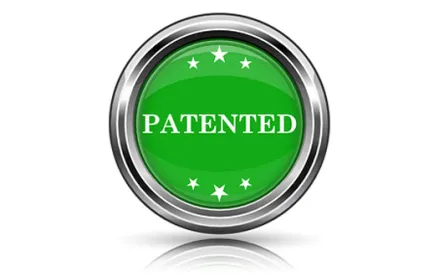The US Court of Appeals for the Federal Circuit affirmed a district court’s pleadings-stage determination that a patent claim directed to a delivery notification system was subject matter ineligible under 35 U.S.C. § 101. Elec. Commc’n Techs., LLC v. ShoppersChoice.com, LLC, Case No. 19-1587 (Fed. Cir. May 14, 2020) (Prost, C.J.).
Electronic Communication Technologies (ECT) filed suit against ShoppersChoice.com for infringement of a claim directed to an automated notification system enabling a user to select authentication information (e.g., a unique phrase) to be included with future delivery notifications, thus indicating that the notification is legitimate. The claim also recites enabling the user to communicate with someone regarding the “particulars” of the delivery. ShoppersChoice moved for judgment on the pleadings, arguing the patent was invalid under 35 U.S.C. § 101. The district court granted ShoppersChoice’s motion, finding the asserted claim was directed to the abstract idea of providing advance notification of the pickup or delivery of a mobile thing. ECT appealed.
Applying the two-step Alice/Mayo analysis, the Federal Circuit affirmed the dismissal. For the first step of Alice/Mayo, the Court reviewed the district court’s analysis of the six “functions” recited by the asserted claim. The Court agreed that two of the six functions—monitoring the location of a package and notifying a party in advance of arrival—were merely business methods in existence for many decades. The Court also agreed with the district court that the remaining authentication-related functions were abstract. Namely, the patent specification’s broad description of “authentication information” included, among other things, a phone number or partial credit card number, leading the Court to conclude that such a feature is “abstract not only because it is a longstanding commercial practice, but also because it amounts to nothing more than gathering, storing, and transmitting information.” To further support its point, the Court cited seven Supreme Court and Federal Circuit decisions reaching the same conclusion.
Turning to step two of the Alice/Mayo framework, the Federal Circuit concluded that the claims did “not include an inventive concept sufficient to transform the claimed abstract idea into a patent eligible application.” ECT argued that in Amdocs v. Openet Telecom, “this court held a far shorter, far less enabled claim valid.” In response, the Court noted that “just because a patent claim is enabled does not mean that the claim is patent eligible” and “[h]ere, the claim only entails applying longstanding commercial practices using generic computer components and technology; such claims are ineligible under § 101.”
Finally, citing Cleveland Clinic Found. v. True Health Diagnostics, the Federal Circuit confirmed that district courts may find patents ineligible under § 101 at the motion to dismiss stage where “patentee provided no proposed [claim] construction . . . that would change the § 101 analysis.” ECT argued “in a conclusory fashion” that claim construction should have occurred, but did “not identif[y] a single claim term that it believes requires construction” before eligibility could be decided.



 />i
/>i

